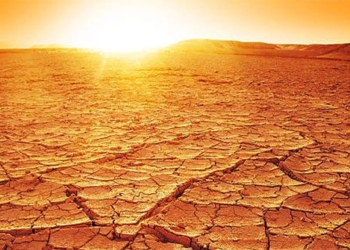This year, unusual weather patterns have become more prevalent than ever before. In mid-May, northern provinces were still experiencing a strong cold spell. As we approach the end of May and the beginning of June, heavy rains accompanied by chilly winds continue to occur.
Typically, at this time of year, Hanoi and northern regions are basking in intense heat, with some days marked by oppressive and stifling weather, signaling the peak of summer. However, this year, summer has arrived quite late. Some forecasts suggest that the characteristic sweltering heat of the past may no longer be a reality.

A NASA satellite image of Hurricane Dorian recorded in 2019. (Photo: Getty Images).
The reasons behind these weather patterns are still a topic of debate. However, according to the opinions of many experts worldwide, the continuous occurrence of off-season weather and unpredictable changes is one of the clearest impacts of climate change.
Spencer Weart, a historian and retired director of the Center for History of Physics at the American Institute of Physics in College Park, asserts that weather is becoming “worse” for people in the U.S. and globally.
Notably, this is not the first time Earth has experienced such phenomena. During the Triassic period (252 to 201 million years ago), a catastrophic climate change event may have occurred, culminating in a rain that lasted for millions of years.
Furthermore, at the end of the Cretaceous period (145 to 66 million years ago), Earth’s temperatures skyrocketed for over 100,000 years due to massive amounts of carbon dioxide released after an asteroid impact on our planet’s surface. This event ultimately led to the extinction of the dinosaurs.
Clearly, history shows that climate fluctuations are significant enough to cause devastating destruction, and today, once again, this could lead to severe consequences for humanity.
Based on experimental data and modern simulations, meteorologists predict that weather influenced by climate change will become hotter, colder, more extreme, and more chaotic, or in other words, “worse.”

Many streets in Hanoi flooded during the rain on the afternoon of May 29. (Photo: Toàn Vũ)
Weart points out that severe storms in the North Atlantic, the Caribbean, and the U.S. in recent years, as well as storms or tropical depressions worldwide, are examples showing that weather is gradually deteriorating. “It is evident that storms are becoming worse everywhere,” Weart states.
Meanwhile, other extreme weather phenomena continue to set new records. For instance, the heatwave in Japan in 2018 resulted in over 1,000 fatalities, which may become more common, Weart notes.
Interestingly, although it may sound contradictory, global warming can lead to colder climate patterns. A 2021 study published in the journal Science indicated that once the Arctic warms, it generates cold winds, resulting in harsher winters in the Northern Hemisphere.
Consequently, climate change could disrupt weather systems to the extent that Earth transforms into a “chaotic” world, irreparably damaged, according to a recently published study.
“We suddenly become the protagonists in a science fiction movie, where only you can save civilization from global disaster,” Weart said. “But the thing is, it’s not science fiction.”



















































